As always, it is a pleasure to hear from our dear friend, Yazaki-san, writing to us from Tokyo, Japan, this time with another terrific guest article about his latest audio adventure with his vintage Marantz Model 7 preamplifier.
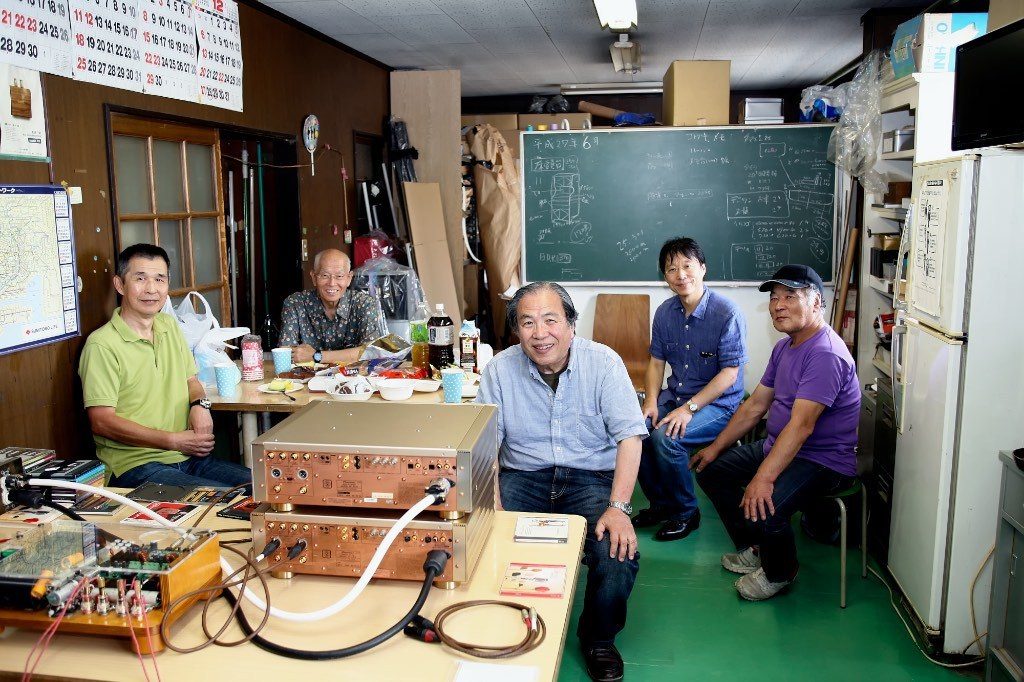
Yazaki-san (center) with friends in Tokyo.
This guest article from Yazaki-san, My Adventure With My Old Marantz Model 7, Part 8, expands upon the fascinating adventure Yazaki-san has shared with us in Part 1 through Part 7, in telling us about the modifications to his vintage Marantz Model 7 preamplifier - one of the all-time great preamplifiers in the history of audio - with his newly developed "Ultimate Ruby Mica" capacitor.
You can read the previous installments of Yazaki-san's My Adventure With My Old Marantz Model 7 articles at the following Jeff's Place links: Part 1, Part 2, Part 3, Part 4, Part 5, Part 6, and Part 7).
Thank you so much, Yazaki-san, for taking time to write about your Marantz Model 7 adventures and to share them with us here at Jeff's Place!
Dedicated to All of My Kindred Spirits Far and Near - Mr. Shirokazu Yazaki
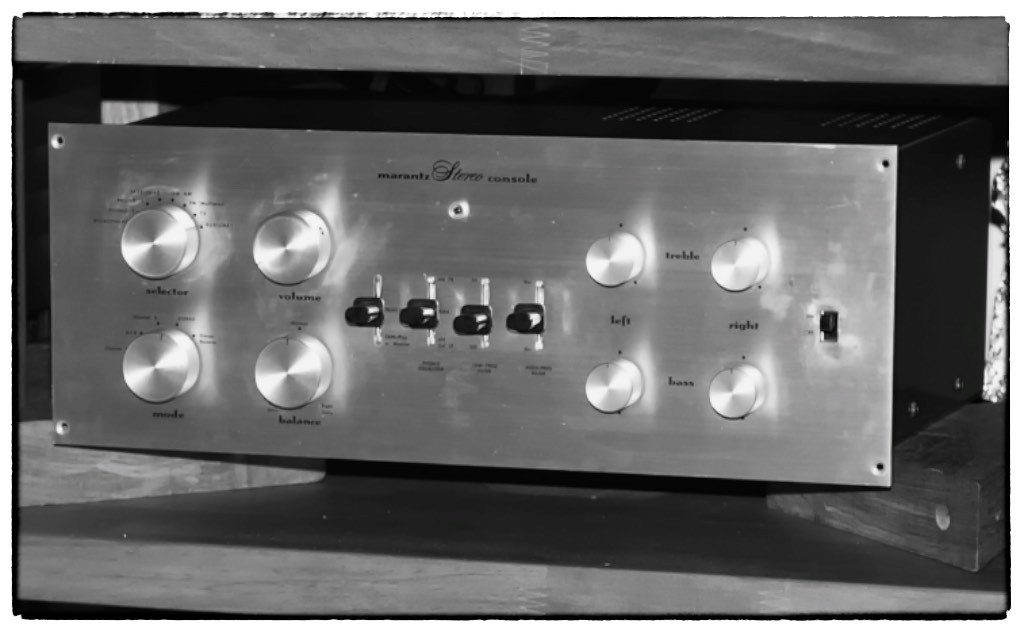
Yazaki-san's vintage Marantz 7k preamplifier.
The Unforgettable Hot Summer Days
More and more, the summers in Tokyo have been getting hotter and longer, and we feel the effects on our lives. This summer the temperature exceeded 36 degrees C (96.8 degrees F) for over a week, and due to the high temperatures and high humidity, and there were frequent heatstroke warnings in the weather forecast on TV.
However, despite the terribly hot weather in July, August, and September, and the big typhoon that hit us, my friends, Kajiwara-san, Nishikawa-san, Kato-san and I were in a state of excitement with full of joy like never before.
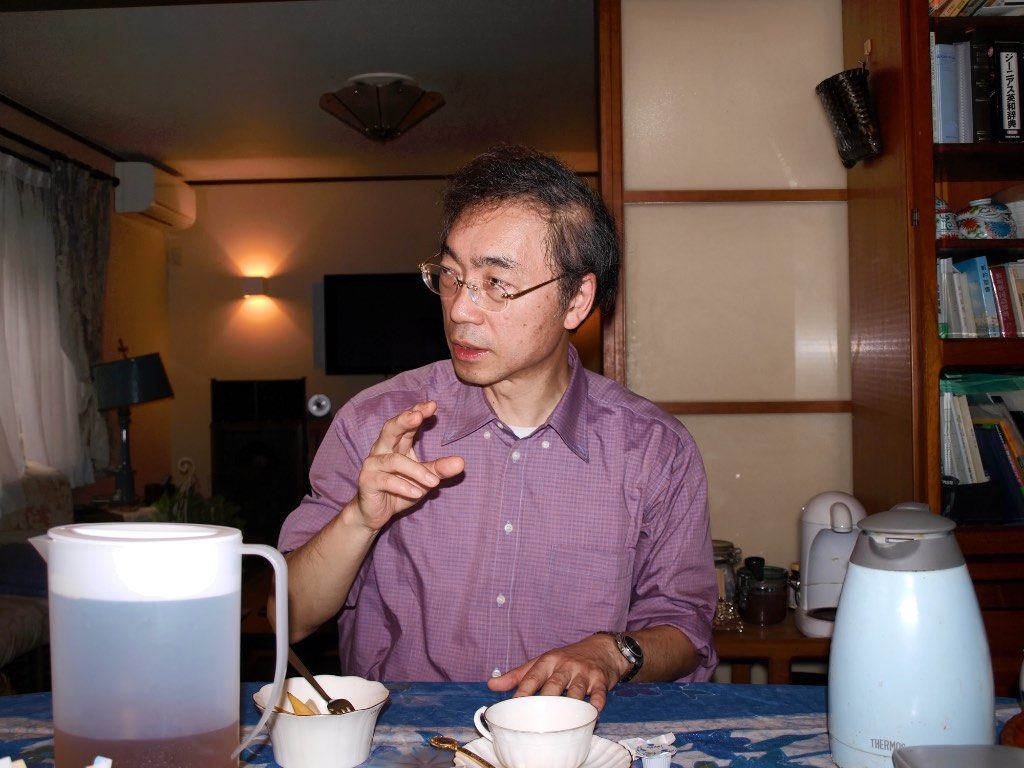
Kato-san
Here is my good old friend, Kato-san (above), who I introduced to you in the "Kindred Spirits: Kato-san Checking in from Hakodate, Japan!" post at Jeff's Place (HERE).
Our excitement was due to the very fortunate fact that we came across the capacitor that I named the “Ultimate Ruby Mica", and we all got a chance to hear its sound in each of our Marantz Model 7 preamplifiers, which we modified using this mica capacitor.

Yes, we all had the same impressions of the "Ultimate Ruby Mica" capacitor in each of our different audio systems. We were so amazed that just replacing a few parts could make such a great sound quality improvement to give truly “Real-sound”.
Due to our exceptional results, I’d like to strongly recommend this "Ultimate Ruby Mica" capacitor modification to all kindred spirits who are original Model 7 enthusiasts.
The "Ultimate Ruby Mica" modification is the subject Part 8, and I want to explain what we did in this adventure with our Marantz Model 7 preamplifiers, as well as provide you with some hard data in the application of this mica capacitor modification.
I’d also like to give my story a little objectivity, so in the latter part of this article I will share with you Roy-san’s latest impressions after performing the "Ultimate Ruby Mica" modification to his own Marantz Model 7 preamplifier (below), which will be a very good reference case for you fellow Model 7 enthusiasts.
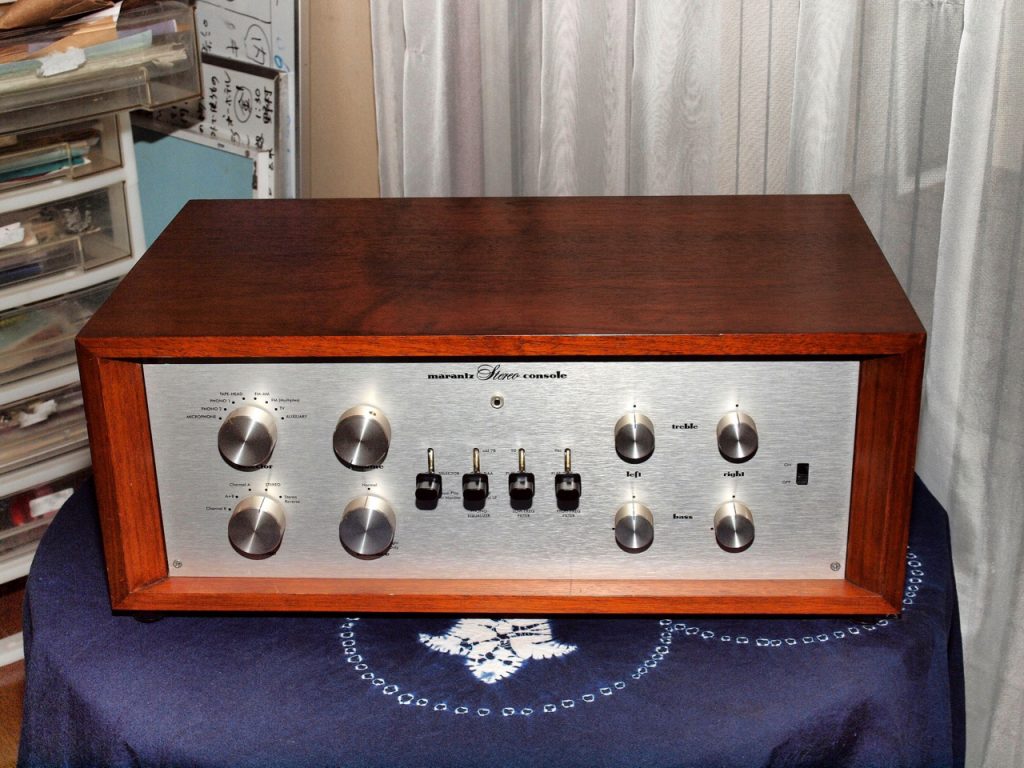
Roy-san's Marantz Model 7 Replica that was modified by Yazaki-san.
As a refresher, let me have you first drop by and check out Roy-san’s initial status report for his modified Model 7 Replica, just one year ago (HERE).
My Encounter with the “Ultimate Ruby Mica”
You might know that I personally have been looking for the supreme capacitor for so long a time, and it has been the goal of my great “Capacitor Adventure” to find such a capacitor.
Luckily enough, I feel that I successfully managed to reach that goal just right now with the "Ultimate Ruby Mica" capacitor.
I dare to say that each and every capacitor that I have come across from around the world, from all ages and countries, has its own unique sounding characteristic, favorable or not.
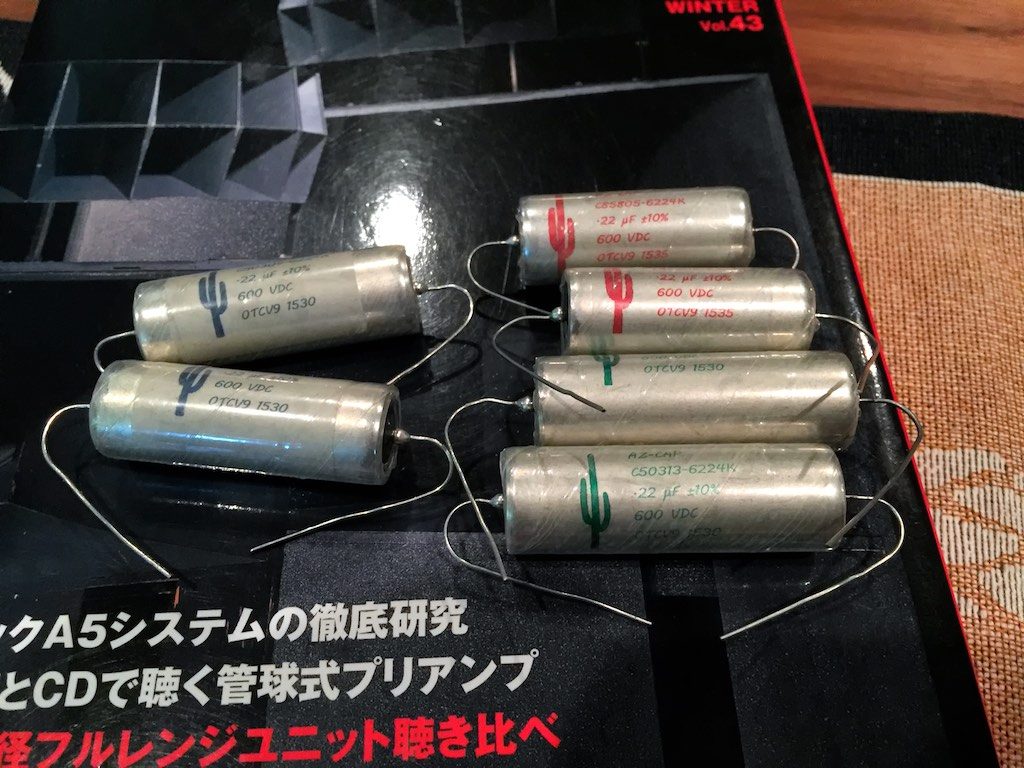
Arizona Capacitors Red, Blue, and Green Cactus capacitors.
The reason why I put Arizona Capacitor’s Red, Blue and Green Cactus capacitors on the market was because each style of these capacitors - the Red, Blue, and Green Cactus - has a unique and appealing tone or incredible charm in its performance. Not to say that their sound quality is fully perfect in every respect, but that each will excel in a particular application when voicing a circuit.
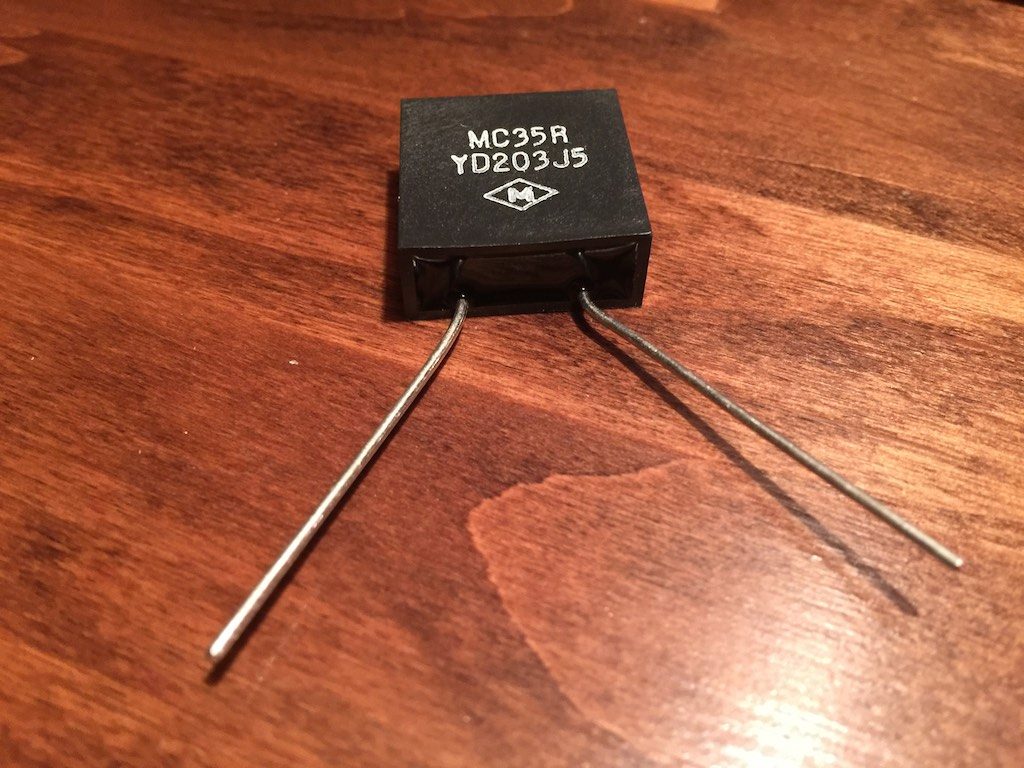
0.02uF SPEC Ruby Mica capacitor.
Also, with SPEC’s MC-DA mica capacitor series that I introduced (above), they are surely proud of the vast amount of transmitted signal information with the highest transparency that no other capacitor can compete with, but still I feel that they have a little bit of the characteristic tone that mica capacitors are known for.
However, we have not found that characteristic tonal quality that mica capacitors are known for with this new "Ultimate Ruby Mica" capacitor (below).
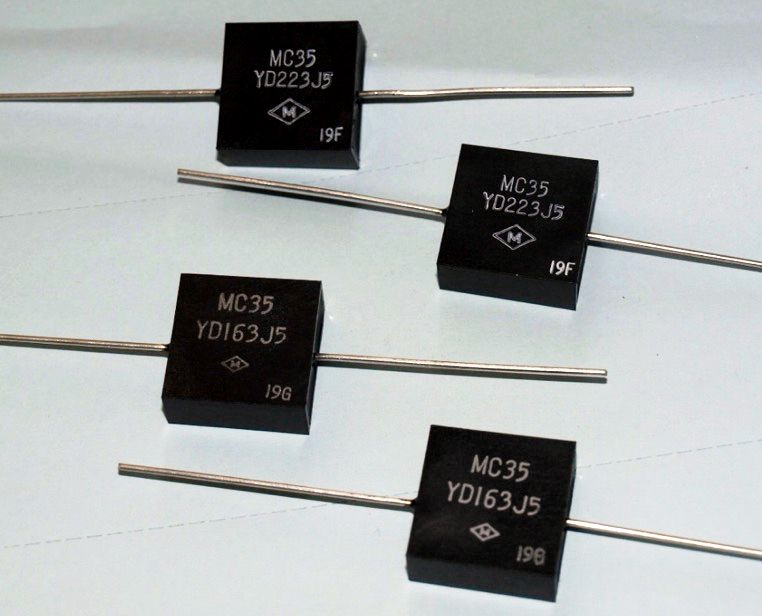
"Ultimate Ruby Mica" capacitor.
Furthermore, I’d like to affirm that all positive and preferred adjectives could apply to the "Ultimate Ruby Mica" capacitor's tone.
What we have found with the "Ultimate Ruby Mica" capacitor is that it has an extraordinarily higher quality in another dimension, not only in regard to the tone, but also the sound quality.
The aural description for the "Ultimate Ruby Mica" capacitor is very difficult to articulate, but dramatic to experience, so let me say simply that its sound is so natural and real.
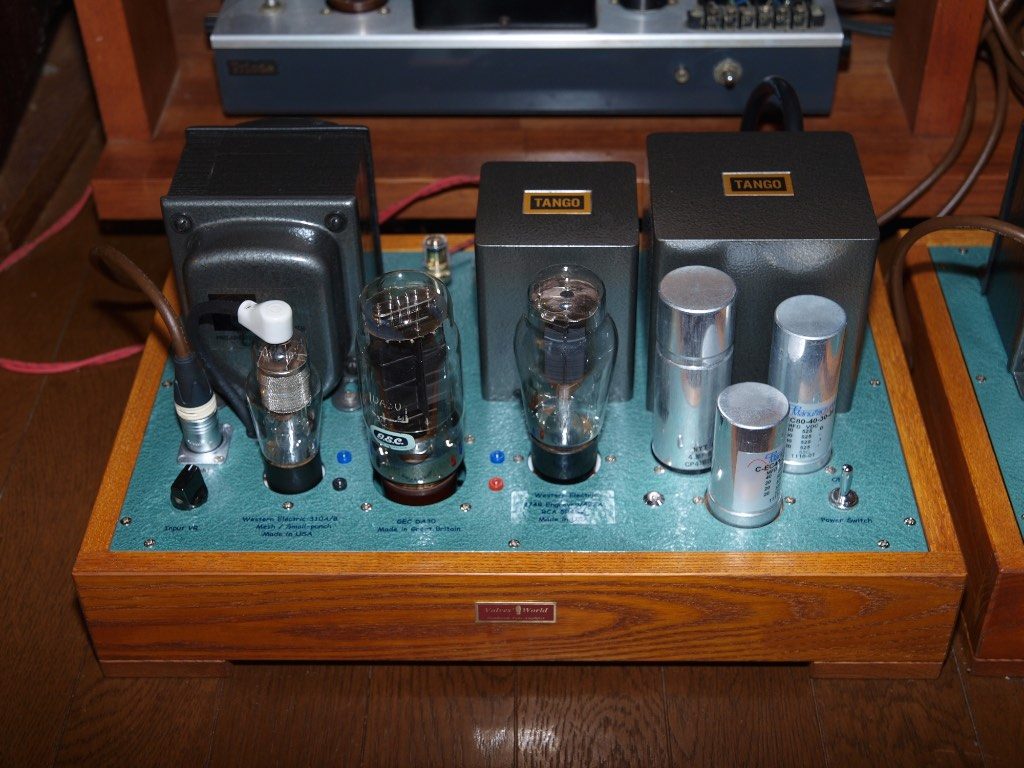
Yazaki-san's PX25A / DA30 SET monaural amplifier.
In the Adventures in Real Sound with Yazaki-san: Alan-san’s GEC PX25A (DA30) Monaural SET’s - Part 4 article I wrote for Jeff’s Place in the middle of June (HERE), I managed to write-up a preface about my experiences with electrolytic capacitors, but sorry, I haven't been able to go into the details of those experiences yet as a follow up to that article.
I have had so many discussions about my experiences with electrolytic capacitors, but I hadn't yet organized well the stories to tell you about, but as I said before in my preface, “I often think and wonder that if the electrical characteristic of the usual electrolytic capacitors were close to an almost ideal level, such as with a well-built mica capacitor, how much we could fully enjoy the music playback with more realistic and organic sound by the audio devices.”
In the meantime, I have been thinking about the nearly perfect or ideal characteristic for the mica capacitor. I dare to say that, compared to the mica capacitor, it can be said that the characteristic of electrolytic capacitor would be almost incomplete.
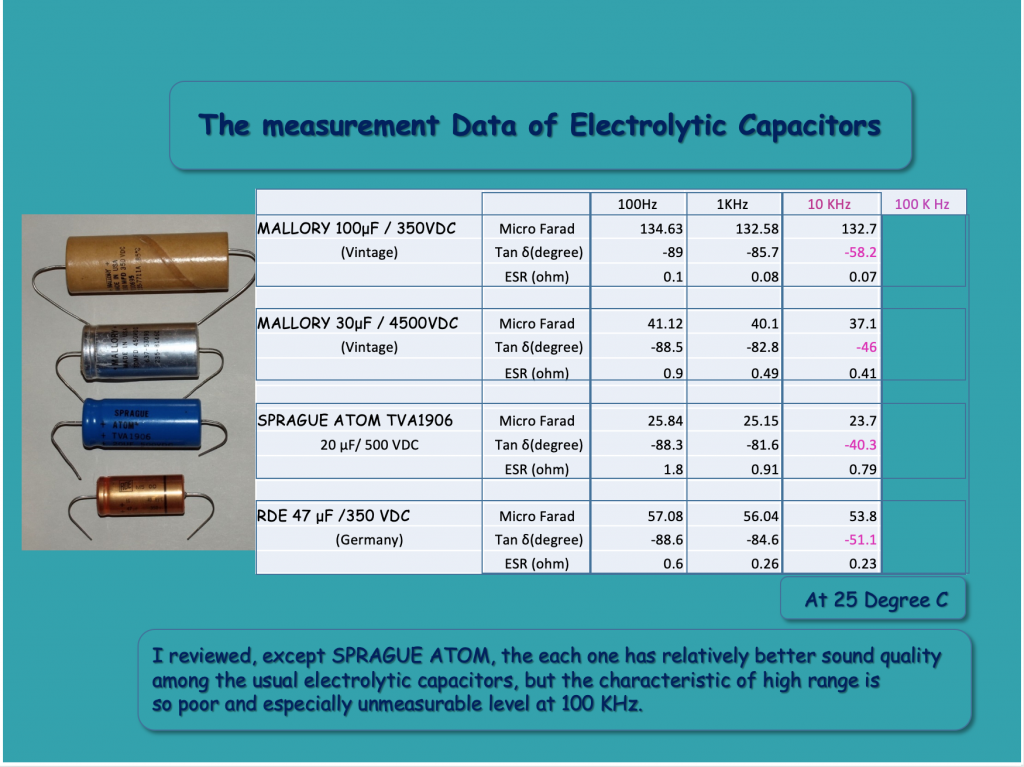
Tan δ, the dissipation factor of each type of capacitor.
Please refer to the data in the slides above and below, especially Tan δ, the dissipation factor of each type of capacitor.
I included a few samples of electrolytic capacitors that I had on hand in the slide above, and the "Ultimate Ruby Mica" capacitor data are given in the slide below.

I thought that there might be a possibility to find out the breakthrough of the improved real hearing quality of the "Ultimate Ruby Mica" because of its outstanding and sublime physical characteristics.
Mica is a pure mineral that is far beyond human understanding. In particular, Ruby Mica is the highest-purity mica, which is produced only near Giridih and Bihar, in the northern part of India (more HERE).
What’s a wonder is the fact that it is just a treasure of The Earth, brought about by the eternal Himalayan mountain building processes. When it is used as a dielectric, it has not only supreme characteristic but also truly transcendent sound quality. When I think about this, I’m deeply moved to the greatness of its natural providence.
Well, one day in the end of June, I talked about the possibility of improving the actual hearing quality of the mica capacitor on the phone with Mr. Manabu Matsuzaki, who is the president of “Matsuzaki-denki”, a limited private company, which has long experience in the production of mica capacitors for mainly industrial use.
Mr. Manabu Matsuzaki and I have been in a friendly relationship with each other from when I produced the MC-DA series of capacitors with him 9 years ago, and at the end of our 15 minute phone call, he offered me an idea. His idea was exactly what led to the birth of “Ultimate Ruby Mica”.

“Ultimate Ruby Mica” capacitor.
Well, in early July, fortunately enough, the first sample of a 0.022 MFD “Ultimate Ruby Mica” capacitor was delivered to me, and Kajiwara-san and myself realized in an instant at one hearing that it wasn’t something ordinary, but rather it was extraordinary!
I am sorry that I cannot explain more about its structural features and the details here. I personally named it the “Ultimate Ruby Mica” capacitor, but it is not yet the official product name of Matsuzaki Denki for the capacitor, so my name for it does not appear as a custom marking on the capacitor's surface yet.
Amazing Model 7’s Tone-Amplifier
At the same time, I started once again to review the circuit design of Model 7’s tone-amplifier, which has been overlooked for so long a time in past technical reviews in Japan, compared to the fabulous Model 7’s phono EQ .
I also presented a conclusion about this in Part 7, saying that “Summing-up, the geniuses of Marantz took the severe risks of a challenging and unstable circuitry, using a K-K feed-back circuit on three stages only, for getting highly sensitive and very lively sound from the phono EQ with full musicality. We had never experienced this before, and they truly succeeded in creating a completely unique Marantz circuit. Furthermore, if can you believe, this was an achievement from over 60 years ago!"
Compared to the uniqueness of its phono EQ, the circuit design of tone-amplifier in the latter stage of the Model 7 is reasonable, solid and orthodox, and it is an extremely effective design of a tone control curve, so it was never talked about.
First, this tone-amplifier receives the input signal, including the output of phono EQ, with the balance control of 1 M ohm, and then the signal is guided to the main volume control of 500 K ohm, but these high resistance values might be set to be able to accept the signal without any losses. These volume controls play an important role of passing the signal to the first stage 12AX7 (ECC83), and the one side of V4 and V5.
Of course, this high impedance reception with using a vacuum tube, which is close to an ideal voltage amplification element, would be one of the precious merits of a tube preamplifier, and it is completely different from a semiconductor preamplifier.
However, because of the high-impedance circuit, careful attention must be paid to the induced noise due to electromagnetic waves. In the Model 7, the shortest connection between the balance volume control and main volume control and the minimum necessary shield wire, etc. are adopted for this measure.
The subsequent stage is composed of a two-stage amplifier, using V4 and V5 for each channel, and an output stage by a cathode follower circuit, using V6 for each channel. If you are interested in the cathode follower of Model 7, please refer to the Part 3 article (HERE).
In addition, P-K feedback, which is retuned back from the second stage plate to the first stage cathode, is applied to the amplification section, and basic necessary static characteristics like gain, frequency, distortion, etc., are arranged in this two-stage amplifier.
Anyways, originally, the two-stage P-K feedback circuitry can work stably, and also the required gain is for about 20 dB at most, which is why - like with its phono EQ - K-K feed-back circuitry over three stages is not needed.
The most important function of a tone amplifier is to receive the input signal with higher impedance, then to output it with as low of impedance as possible, and at the same time to ensure the necessary gain. So this means that the configuration of the Model 7’s tone-amplifier has extremely high universality that can fully satisfy this basic requirement.
Also, it is interesting to note this tone amplifier configuration is exactly the same as the gorgeous vintage McIntosh C22 (1963-1968), which came after the Model 7's debut in 1958, and you might have known well that it was a really competitive product with the Model 7 more than a half century ago.
Limitations of Analog LP Playback
The modifications that I have introduced and shared with you so far have followed the original circuit design as closely as possible, even when replacing parts, capacitors, and also resistors.
However, I thought that this modification of the tone-amplifier should also be fully sufficient for more modern high-resolution digital sources as well.
Of course, playing music on analog LP discs is still very fascinating and enjoyable for a lot of audiophiles at present, and I wrote mainly about the exceptional wonder of the Marantz Model 7’s phono EQ circuit in the articles from Part 1 to Part 7.
But from the point of view of an engineer, I think that there are a few physical limitations in the reproduction of the analog LP itself, and those limits or weakness are rather seen in low-end, I think.
Needless to say, but I’d like to point out the unavoidable “arm resonance” at around 10 Hz, which is decided by the total mass, composed of the effective mass of tone arm and the cartridge, including the headshell, and also the compliance of the cartridge.
Of course, we have seen so many trials and tribulations for controlling or lowering the resonance in the design history of tonearms.
For us, on the user side, the following combinations have been considered desirable when selecting a cartridge and tone arm.
In the case of MC cartridge with small compliance, the selection of a heavy-weight long-arm would be considered better, and in the case of MM cartridge with large compliance, the combination of a lightweight tone arm and shell has been recommended.
I understand that such selections for cartridges and tone arms has been a pleasure of our audio hobby, but from a technical point of view, it might be tacit knowledge that it is desirable to place this tonearm resonance frequency at the lower limit of the audible band, and more specifically, it would be preferable to place the resonance frequency that is located around 10 Hz at even lower frequency.
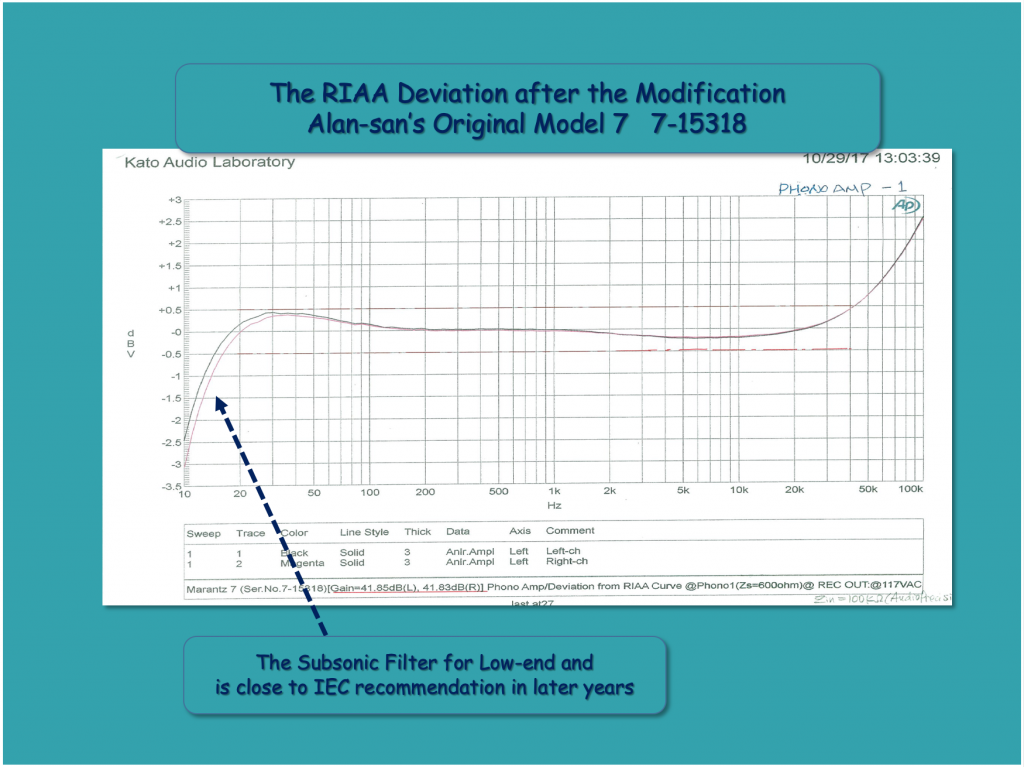
You can see that in the figure above of the RIAA deviation curve of Alan-san’s original Model 7 (serial number 7-15318) that its deviation value at 10 Hz is – 3dB.
Alan-san's Model 7’s subsonic filter seems to have already included the filter characteristic proposed by the IEC (International Electrotechnical Commission) in 1963. In any case, not only this arm resonance, but also the rotational noise of the turntable and the low-range mechanical vibration caused by the motor rotation, are reflected in the output signal of the cartridge. Therefore, such a subsonic filter would have been indispensable.
However, such a filter causes not only a significant change in the frequency characteristics, but also it involves a rotation of the phase characteristics from a higher frequency. In our actual hearing, it not only brings about a change in tone, but it also makes it difficult to reproduce a so-called coherent and lively sound that is well-phased in all frequency bands.
Another negative point about low frequency reproduction is the high level of low frequency crosstalk. Of course, monaural LP playback does not have this problem, but in stereo playback, it is necessary to extract two low-frequency signals from one groove, so it can be said that it is too difficult in principle to improve the low-end crosstalk.
Well, fortunately, our human hearing is not so sensitive to this low-end, and so it would also be true that we can enjoy the playing of our analog LP discs almost without experiencing these matters. In other words, the reproduction system of vinyl discs - including RIAA standard - are tailored to the limits of human hearing, as I understand it.
C82, The First-Stage Coupling Capacitor of Model 7’s Tone-Amplifier
As mentioned above, analog record playback contains the weakness associated with low-end frequency playback, and the fact that the phono EQ is naturally subject to low-frequency limitations due to its inevitable subsonic filter.
When the Marantz Model 7 came out in 1958, the main high-fidelity sources were analog LPs and FM broadcasts, and so for the tone amplifier receiving the phono EQ output, expanding the low-range would have been unnecessary, I suppose.
Well, let’s examine the time constant from the first stage of the tone amplifier to the next stage.

It can be seen that the time constant is determined by the coupling capacitor C82; 0.01 MFD and the grid resistor R83; 1M ohm and is set to about 23 Hz.
In addition, these constants, 0.01 MFD and 1 M ohm are exactly the same as the first stage of the McIntosh C22, as mentioned earlier, which must be considered to be based on the circuit design of Model 7.
This time constant indicates the cutoff frequency of the high-pass filter on the circuit is -3 dB on the frequency characteristics, and +45 degrees on the phase characteristics.
So, especially, C82 is so important as a coupling capacitor. This is because the first-stage coupling capacitor determines the information amount of the signal that flows to the tone amplifier thereafter.
Therefore, I had already replaced C82 not only in my Model 7 K, but also in Alan-san’s and Roy-san’s Model 7, with the 0.01 MFD of the Spec MC-DA mica capacitor, the best I had ever met at that time. The result was fully successful according to their impressions.
Then in the midst of August summer heat, I received the first sample of “Ultimate Ruby Mica” capacitor, 0.016 MFD. Immediately I asked my friends, Kajiwara-san, Nishikawa-san, Kato-san to review the capacitor by replacement the Spec MC-DA 0.01 MFD mica capacitor at C82 with the “Ultimate Ruby Mica” 0.016 MFD capacitor in their Model 7s.
The calculation of the cutoff frequency when we changed from 0.01 MFD to 0.016 MFD was so easy, and it was about 10 Hz, and so we could imagine the low-range could be expanded on the static characteristics, but the most important thing for engineering design change an analog audio gear would be an actual hearing impression.
As far as the results, fortunately enough my friends in Japan have been fully enjoying the musical and "Real Sound" benefits of this modification every day while listening to music. What has been most delightful to us is that it reminded us not only the beauty of analog LP playback, but also how marvelous CDs could sound with this modification. These improvements are partly a result of the design changes for the cutoff frequency, but mostly due to the replacement the Spec MC-DA 0.01 MFD mica capacitor at C82 with the “Ultimate Ruby Mica” 0.016 MFD capacitor.
For the original design of the Model 7, the famous vintage capacitor, the Sprague Bumble Bee, was used for C82 because of the attractive tone of the Bumble Bee, but I found with the original Model 7’s of Handoko-san and Alan-san that all of the original 0.01 MFD Bumble Bees for C82 and C63 were undergoing breakdown voltage failure.
These capacitors are connected directly to the pin of 12AX7 (ECC83) and these capacitors have been subjected to heat shock for many long years because of their location, so I strongly recommend to you to check that these Bumble Bee capacitors are ok, and to think about the replacing them with the “Ultimate Ruby Mica” 0.016 MFD capacitor. By doing so, I believe your audio perspective may be opened to a world full of new possibilities.

C91, the Final Coupling Capacitor From the Second Stage to the Cathode Follower
The circuit design of the coupling capacitors of the second stage to third stage, the cathode follower, in the Model 7’s tone amplifier is somewhat complicated and questionable.
These coupling capacitors have a three-stage configuration, and the reason is that these three coupling capacitors are connected in series to sandwich in a very useful bass and treble tone control circuit and the variable gain control circuit.
These two circuits would be vital features for the Marantz enthusiasts at that time, I suppose, but I’d like to suggest that coupling capacitors connected in series could be harmful to the transmission of the signal due to signal loss. It is inevitable in principle that there is some signal loss as the signal is transmitted through a capacitor, and the losses are multiplied with capacitors connected in series.
In the original Model 7, a 0.22 MFD Sprague Bumble Bee was used for C83, and for C49 a 0.33 MFD polyester film capacitor was used, and for C91 a 0.01 MFD ceramic capacitor was used.
I suppose this combination of coupling capacitors was chosen in order to complement the unique tone characteristic of the Bumble Bee capacitors. Of course, there are a lot of audio enthusiasts who really admire the sound of the Bumble Bee, I understand.
However, I think the using a ceramic capacitor for C91 would not be so good of a choice. Surely, a ceramic capacitor has a superior characteristic in the high-frequencies, but its sound quality is slightly rough and not really suitable for music playback, in my experience.
I had already changed this ceramic capacitor to a MC-103DA 0.01 MFD mica capacitor without any hesitation during the modifications of Alan-san’s and Roy-san’s Model 7s.
Anyways, we should select a capacitor with as much transmitted information as possible, in another words, a capacitor with as little loss as possible in the entire frequency band, especially for C83, C49 and C91.
So it seemed completely reasonable to us to try the “Ultimate Ruby Mica“ 0.016 MFD capacitor for C91, and the improvement of static characteristics - and the actual sound quality - could be expected just as with C82.
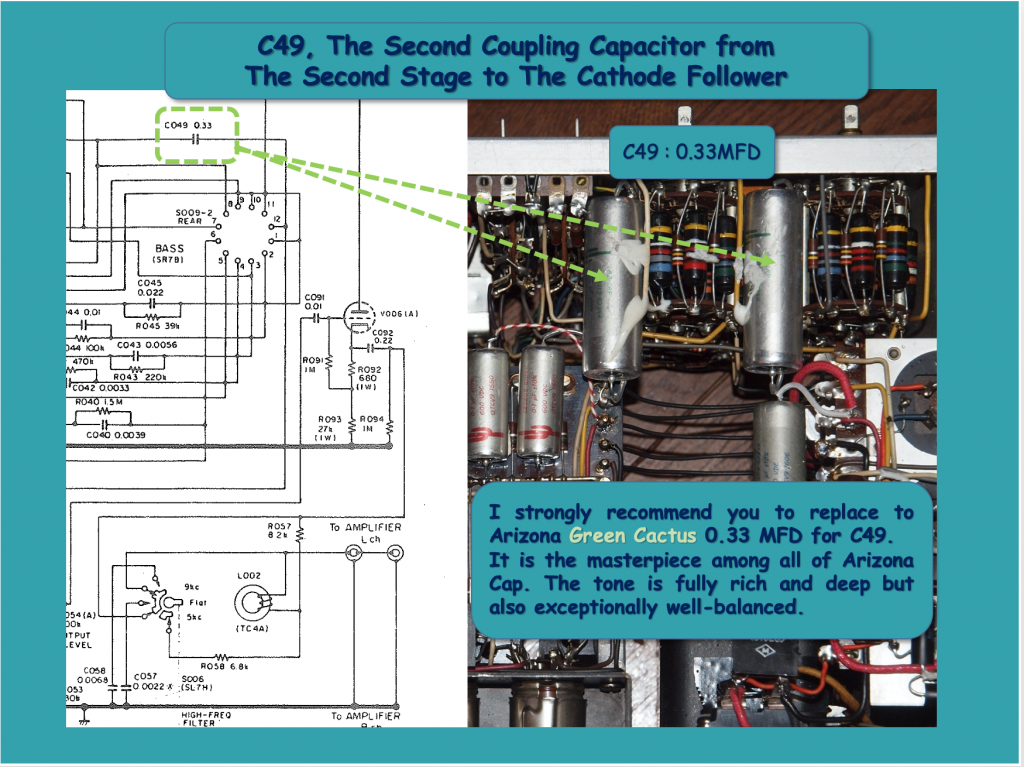
Also, I’d like to add one more thing about C49. I changed the original C49 polyester film capacitor to an 0.33 MFD Arizona Green Cactus capacitor during the modification of Alan-san’s and Roy-san’s Model 7. I found the 0.33 MFD Arizona Green Cactus capacitor to be the best sounding capacitor for C49 in the series of the Red, Blue, and Green Cactus capacitors from Arizona Capacitors.
The 0.33 MFD Arizona Green Cactus capacitor has outstandingly well-balanced tonal character, and above all deep and graceful timbre, which is why I used it in the RSP-901EX and RSP-AZ9EX impedance compensators as well.
0.33 ~ 0.47 MFD Capacitor with Parallel Connection to C92 for Roy-san’s Model 7
I’m so delighted to hear Roy-san loves so much the combination of his modified Model 7 with the SPEC RSA-F33REX Real Sound Amplifier, driving his beloved QUAD ESL 57.
Then a concern occurred to me about the system integration when I was reviewing the tone amp’s circuit diagram, as the input impedance of the SPEC RSA-F33REX is around 7.5 K ohm, which is surely a low value compared to tube amplifiers, and the output stage of the Model 7 tone amp is designed with a cathode follower circuit composed of a 0.22 MFD capacitor at C92 and a 1 M ohm capacitor at R94.
So, when we connect the output of the Model 7 and the input of the RSA-F33REX, the cutoff frequency of the low-cut filter would be around 96 Hz, which I worry would cause insufficient low-frequency volume.
And so, I asked Roy-san to try installing a 0.33 ~ 0.47 MFD capacitor with a parallel connection to the 0.22 MFD capacitor at C92. Then the cut-off frequency would be reduced to 39 Hz for the 0.33 MFD capacitor, and to 31 Hz for the 0.47 MFD capacitor, so the matter of its static characteristics will be practically solved. I strongly recommend Roy-san to try the Arizona Capacitors Green Cactus 0.33 MFD capacitor first, and I imagined Roy-san would surely love its natural tone character.
Roy-san’s Personal Impressions
"I apologize for not getting back to you sooner: it took a few days to get the new Ultra Mica caps and Arizona Green caps installed. It then took another few days to listen and gather my impressions. I have to say that the sonic improvements coming from these caps is substantial! I was so enthusiastic that I had a good friend of mine come over to listen and get his unsolicited impressions. He confirmed everything I had been hearing."
"The bass is now amazing. It has impact and 'snap' as well as extension down to the lowest octaves. It gives the music a more solid foundation and provides a stronger support for the rhythm of the music. Music has greater impact as the bass line becomes more prominent. The bass is much more integrated with the music. Wonderful!"
"There is yet another layer of veiling/distortion removed and the music is that much closer to 'real' - it is getting very 'real' sounding and it is delightful!"
"Along with the reduction in veiling there is a noticeable improvement in dynamics. Dynamic range has increased which has a profound effect on vocals - the nuances of human voice become even more apparent and there is a large reduction in vocal 'strain' - the voices flow and are more open."
"The entire sound stage is more open and larger with a commensurate gain in subtlety and texture. New sounds emerge where they were missing before. There is a greater density to instruments and voices towards the rear of the sound stage. I really love this!"
"As my friend said, "It is amazing that such changes can come about from just changing a few capacitors". Yazaki-san, the sound I am hearing is by far the best I have ever heard anywhere. I am enjoying recorded music more than ever before. One of the best features is that no matter what music I put on it all sounds appealing. Records that I used to avoid now sound fine. You are to be congratulated once again for helping us achieve a level of musical enjoyment that is well beyond what we have heard in the past. Thank you Yazaki-san for this wonderful improvement. It was a very, very pleasant surprise!"
Thank you very much for your kind words, Roy, so very much appreciated!
My friends Kajiwara-san, Nishikawa-san, and Kato-san also told me exactly the same thing as Roy-san’s friend told him, "It is amazing that such changes can come about from just changing a few capacitors”.
Furthermore, Roy-san’s impressions are just the same as my friends have felt. What a marvelous thing it is, and of course I'm so delighted to be able to come across such an amazing transformation from such simple changes.
Well, about the running-in time of the "Ultimate Ruby Mica", it will take a while, so please enjoy the aging of sound & tone change over time like you would with a fine wine.
For the Case of Alan-san’s Model 7
Well, I think for Alan-san's Model 7, he doesn't need such an expanded capacitor as described for Roy-san's Model 7, because of the higher impedance of his PX25A mono SETs, and therefore there is not any inconvenience about the cutoff frequency.
However, I think Alan-san’s Model 7’s has an Arizona Capacitor 0.22 MFD Blue Cactus capacitor at C92, so I think that it might be better to install a 0.1 MFD Red Cactus capacitor connected in parallel, as the combination of the Blue Cactus and Red Cactus is so desirable, that this expanded Red would bring out for Alan-san a more beautiful and elegant tone, I suppose, and so I think it’s worth trying.
Please let the respected Jeff’s Place readers remember that in principle, the parallel connection with multiple capacitors is likely to reduce E.S.R. (Equivalent Series Resistance), and as a result it improves sound quality.
The Postscript
Now I am happy to have confirmed the excellent sound quality of the 0.016 MFD and 0.022 MFD “Ultimate Ruby Mica” capacitor.
The “Ultimate Ruby Mica” capacitor is a custom-ordered item from Matsuzaki Denki for now, and currently there is no overseas distributor for the company, and so it seems like it might be difficult for the readers of Jeff’s Place readers to obtain.
However, if you want to try to use this “Ultimate Ruby Mica” capacitor in your audio components, please feel free to contact me by e-mail HERE, and I will try to support you personally.
Anyways, thank you for reading such about these very personal experiences so far!
A Postscript to the Postscript
Join me in a saying a huge "Thank you!" to Yazaki-san for writing such a fascinating article and sharing it with us here at Jeff's Place.
I found the description of Yazaki-san's “Ultimate Ruby Mica” capacitor's performance to be very intriguing, and Yazaki-san has sent me some of his “Ultimate Ruby Mica” capacitors to install into my SPEC RSA-M3 EX Real Sound Amplifier so I can hear what all the fuss is about myself, and so you shall be hearing more on the topic of the “Ultimate Ruby Mica” capacitors in due time.
As always, thanks for stopping by, and may the tone be with you!





























